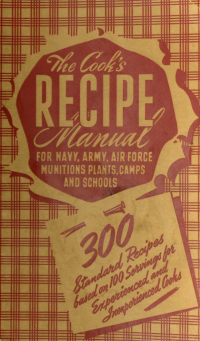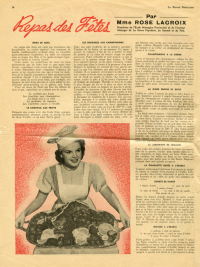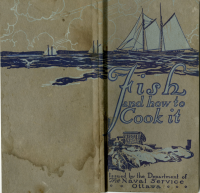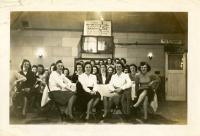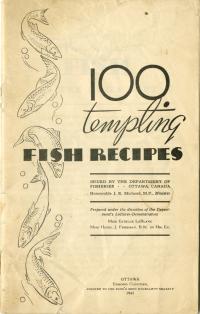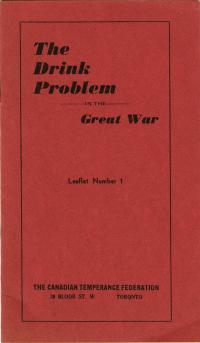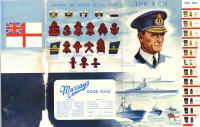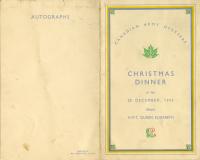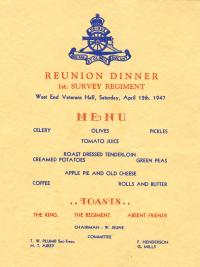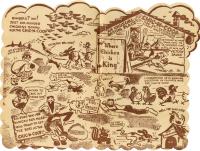Eating
Introductory Essay
The Cook's Recipe Manual
This cookbook was published in 1943 as a guide for cooks in the armed forces, munitions plants, camps, and schools. Each recipe makes approximately 100 servings, mainly mainly from ingredients that could be found in military rations.
La Revue Populaire Décembre 1942
La Revue Populaire was a French-Canadian magazine that was first published in 1907, and continued circulation until its final publication in 1963. It was originally created as a magazine for the whole family, but during the Second World War, they started to focus primarily on content for women and girls.
The December 1942 edition shows this transition by featuring an embroidery stencil advertised to young girls and 'holiday meals' for housewives.
Fish and How to Cook It
At the beginning of the First World War, the Department of the Naval Service issued this booklet in response to the low consumption of fish among Canadians at the time. This booklet teaches 'housewives' how to choose the right type of fish for their family's needs, taking into consideration the nutritional value, cost, and flavour of the fish. The booklet also includes pricing charts to be referenced when shopping, as well as dozens of helpful recipes.
Fancy a sandwich?
A common message to the Canadian civilian population during the Second World War was that their responsible food consumption was as important to the war effort as any other wartime activity. While soldiers fought overseas, Canadians at home could do their part in securing victory by adhering to coupon rationing, and abiding by the restrictions imposed by the Wartime Prices and Trade Board.
100 Tempting Fish Recipes
During the Second World War, fish was one of the few food items that was not rationed. In light of this, the Department of Fisheries attempted to persuade Canadians to buy and consume more Canadian fish. This, they proclaimed, would help the "health and strength" of Canadians, at the same time that it would strengthen the economies of fishing communities. One way the Department of Fisheries aimed to increase fish consumption was by producing recipe books to acquaint housewives with efficient and delicious cooking methods.
The Drink Problem
This booklet from the Canadian Temperance Federation focused on the perceived benefits of the temperance movement during the First World War. The movement reached its peak in 1915, and 1916, when all provinces, except Quebec, banned the sale of alcohol.
Murray's Lunch R.C.N. Menu
Murray's Lunch published this Royal Canadian Navy special edition of its menu shortly after the end of the Second World War. Patrons could read and identify the different naval ranks, insignias, and badges of the R.C.N.
Christmas Dinner at Sea aboard the H.M.T Queen Elizabeth
On 25 December 1945 units of the Canadian Army Overseas enjoyed a Christmas Dinner aboard HMT Queen Elizabeth, the first Christmas following the end of the Second World War. The menu, featuring roast turkey, plum pudding, and Christmas cake among other delicious meal options, highlights the celebratory spirit among military service personnel.
Reunion Dinner 1st Survey Regiment
A menu from the reunion dinner of the 1st Survey Regiment in Newmarket, Ontario. Reunion dinners were common events for veterans and their families to gather and maintain the sense of camaraderie built during wartime service.
Chic-N-Coop Restaurant Placemat
The Chic-N-Coop Restaurant in Montreal, Quebec was well-known for its provocative placemats. During the Second World War, the restaurant would often depict caricatures of Hitler and war scenes on their placemats.
Nevertheless, some of the imagery on display also included stereotypes that are are inappropriate and offensive depictions of different racialized groups. In this way, one simple placemat offers insight on the wartime attitudes of society towards Canada's enemies, but also on society's biases and perceptions of race and culture.

